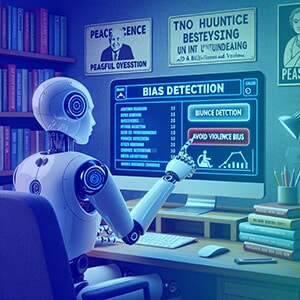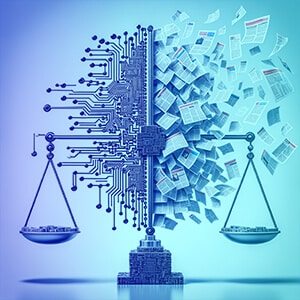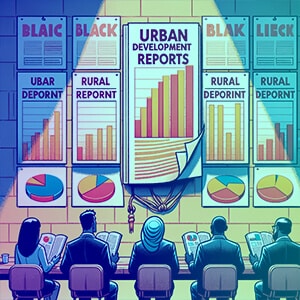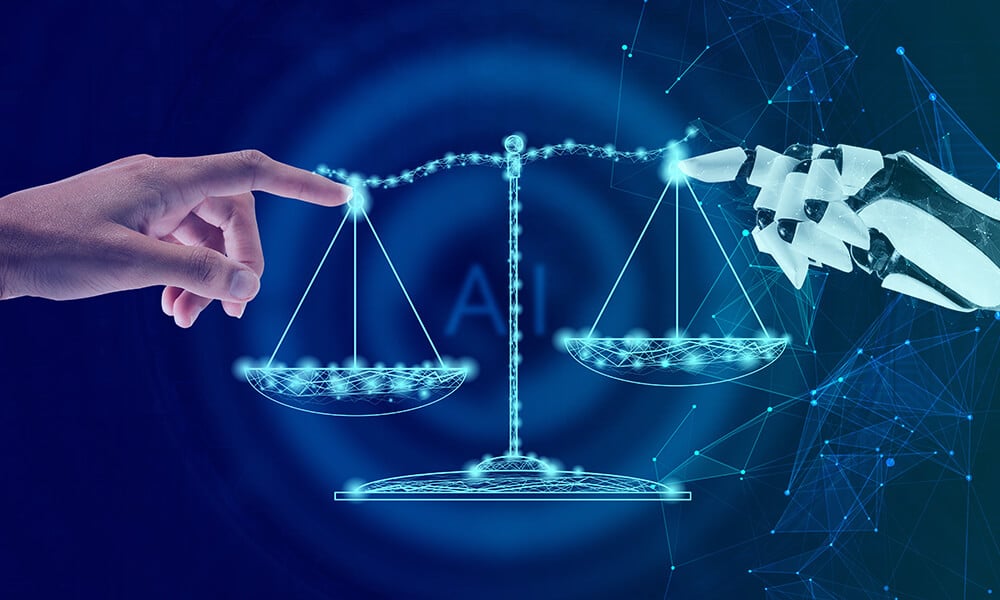In the burgeoning field of artificial intelligence (AI), the focus on ethical considerations and fairness is more than a moral imperative—it’s a foundational necessity for the technology’s longevity and social acceptance. Ethical AI, or Fair AI, is about ensuring that AI systems operate without bias, discrimination, or unjust outcomes. This blog explores the importance of Ethical AI and delves into the various types of biases to avoid.
Why Ethical AI Matters
AI systems are increasingly becoming part of our daily lives, making decisions that affect everything from job applications to judicial sentencing. When these systems are biased, they can perpetuate and amplify societal inequalities, causing harm to individuals and groups. Ethical AI aims to prevent such outcomes by promoting fairness, accountability, transparency, and respect for human rights.
Types of Biases and Examples

Violence Bias
AI systems must be trained to recognize and omit violent content. For example, a language model trained on violent text might generate harmful content, promoting aggression instead of constructive dialogue.

Controversial Topics
Training AI on controversial topics without careful moderation can lead to the AI adopting polarized stances. For instance, an AI trained on data about gun rights might generate contentious and one-sided arguments.

Gender Bias
A classic example of gender bias is when a language model associates nurses with women and engineers with man, reinforcing outdated stereotypes rather than reflecting the diversity of these professions.

Racial and Ethnic Bias
Consider an AI that generates images of CEOs but predominantly depicts them as belonging to a single racial group, thereby ignoring the reality of diversity within the corporate world.

Socioeconomic Bias
AI systems may favor language or concepts associated with higher socioeconomic status, such as assuming luxury brands are the standard for quality, overlooking the broader spectrum of consumer experiences.

Age Bias
AI might incorrectly assume that references to technology are not relevant to older adults, thereby excluding them from conversations about digital advancements.

Cultural Bias
An AI system might generate restaurant reviews that focus on Western cuisines, disregarding the richness of other culinary traditions and thus marginalizing non-Western cultures.

Political Bias
An AI programmed to curate news articles might disproportionately select articles from either the left or right end of the political spectrum, rather than presenting a balanced view.

Religious Bias
If an AI system disproportionately references one religion in a positive light while ignoring or misrepresenting others, it exhibits religious bias.

Regional Bias
A language model might generate traffic reports that are only relevant to urban areas, overlooking rural or less-populated regions.

Disability Bias
Consider an AI health advisor that fails to provide accessible exercise options for people with disabilities, thereby offering incomplete and exclusionary advice.

Language Bias
A translation AI might consistently deliver high-quality translations for some languages, but subpar ones for languages less represented in its training data.

Confirmation Bias
An AI might amplify a user's belief in a false remedy by selectively referencing sources that support that remedy and ignoring scientific consensus.

Contextual Bias
An AI might interpret requests for information about "jails" as a criminal inquiry, rather than an academic or legal one, depending on the context it was trained on.

Data Source Bias
If an AI's training data comes from a forum that predominantly discusses the achievements of a certain demographic, it may neglect the contributions of other groups.
How to Avoid These Biases
Avoiding these biases requires a multi-faceted approach:
- Diverse Data Sets: Incorporate a wide array of data sources to balance out representation across different groups.
- Regular Auditing: Perform ongoing checks to identify and correct biases.
- Transparency: Make it clear how AI systems make decisions and on what data they are trained.
- Inclusivity in AI Teams: Diverse teams can better identify potential biases that might be overlooked.
- Ethics Training: Educate AI developers on the importance of ethical considerations.
- Stakeholder Feedback: Involve users and impacted communities in the AI development process.
Why Shaip
Shaip, as a leader in AI data solutions, offers comprehensive services designed to tackle AI biases head-on. By providing diverse and balanced datasets for training AI models, Shaip ensures that your AI systems are exposed to a wide spectrum of human experiences and demographics, reducing the risk of biases across all fronts—from gender and race to language and disability. Their rigorous data curation and annotation processes, coupled with an ethical AI framework, can help organizations identify, mitigate, and prevent the incorporation of biases into AI systems. Shaip’s expertise in developing bespoke models also means that they can assist in creating AI that is as inclusive, fair, and unbiased as possible, aligning with the global standards of Ethical AI.
Conclusion
Ethical AI is crucial for creating a future where technology serves humanity without prejudice. By understanding and mitigating biases, developers and stakeholders can ensure AI systems are fair and equitable. The responsibility lies with everyone involved in the AI lifecycle to foster an environment where technology mirrors our highest ethical standards, promoting a just and inclusive society. Through vigilance and dedication to these principles, AI can achieve its true potential as a force for good.







